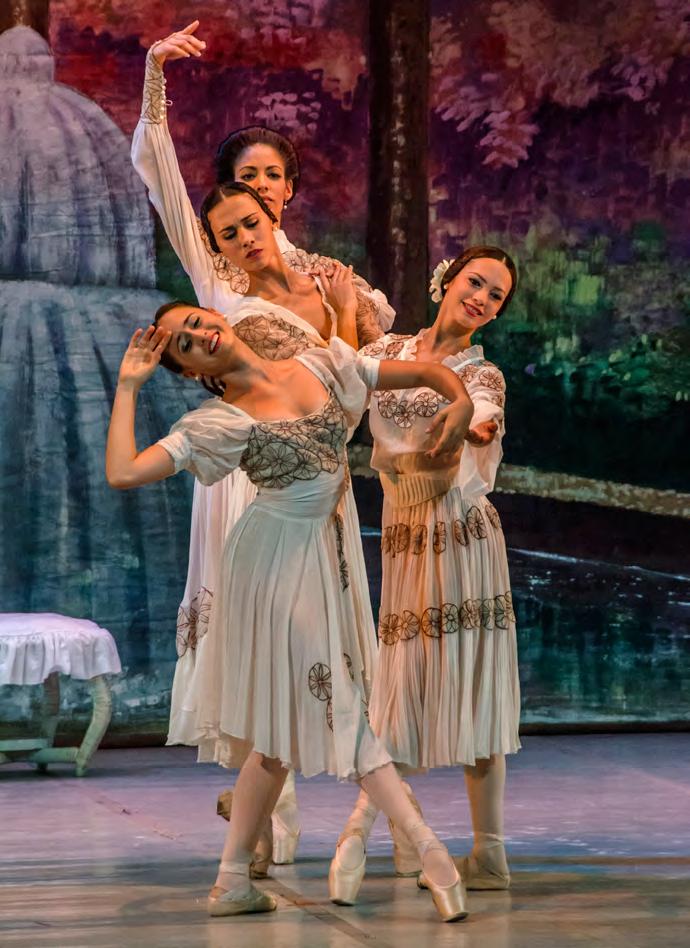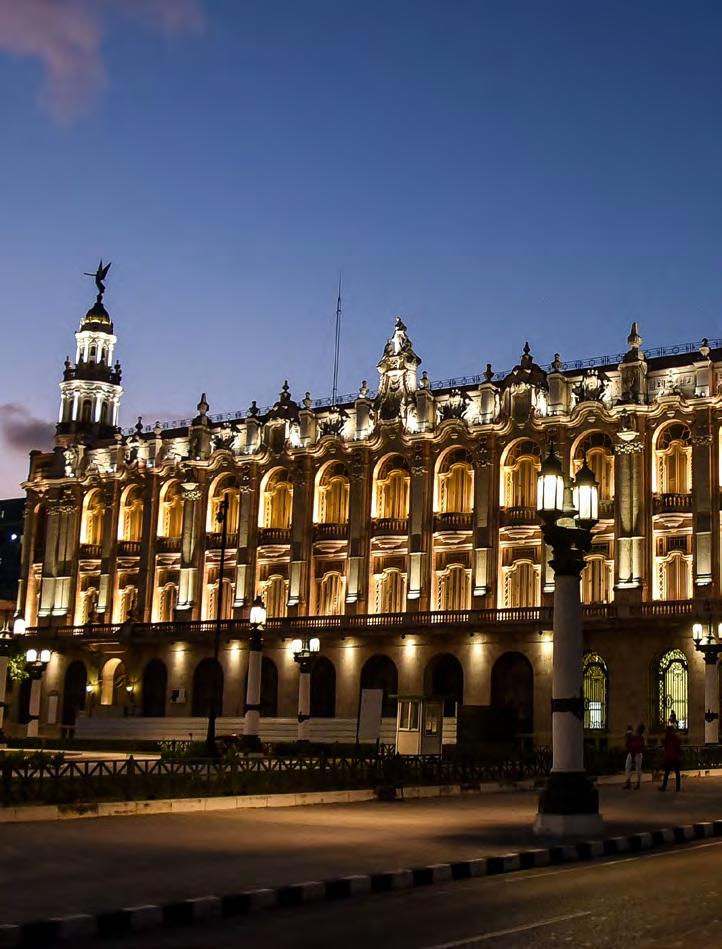
8 minute read
GUÍA DEL OCIO Y LA CULTURA
GRAN TEATRO DE LA HABANA ALICIA ALONSO»
ARQUITECTURA, HISTORIA Y VIDA CULTURAL
Architecture, history and cultural life
El Gran Teatro de La Habana Alicia Alonso, uno de los mayores símbolos culturales que tiene la capital cubana, está celebrando 184 años de glorias, de vida artística, de valores patrimoniales. Considerado el teatro en activo más antiguo de occidente, desde 1978 es considerado monumento de la nación. El Ballet Nacional de Cuba, fundado y dirigido por Alicia Alonso, lo tomó como sede desde 1965, así como también, el Teatro Lírico Nacional, el Ballet Español de Cuba y el Centro Pro-Arte Lírico. Su arquitectura es asombrosamente hermosa. Con un pórtico dórico de tres arcos sobre pilares con columnas adosadas, estructura en herradura, a la italiana; noventa palcos, veinte filas, y más de dos mil capacidades, este Gran Teatro, como aún se le conoce, abrió sus puertas el 28 de febrero de 1838 con un baile de máscaras, pero su inauguración oficial fue el 15 de abril de ese año con la puesta de la comedia Don Juan de Austria, protagonizada por Francisco Covarrubias, padre del teatro vernáculo cubano.
The Grand Theater of Havana Alicia Alonso, one of the greatest cultural symbols of the Cuban capital, is celebrating 184 years of glories, artistic life and patrimonial values. Considered the oldest active theater in the West, since 1978 it has been considered a national monument. The National Ballet of Cuba, founded and directed by Alicia Alonso, has taken it as its headquarters since 1965, as well as the National Lyric Theater, the Spanish Ballet of Cuba and the ProLyrical Art Center. Its architecture is astonishingly beautiful. With a Doric portico of three arches on pillars with attached columns, a horseshoe structure, Italian style; ninety boxes, twenty rows, and more than two thousand seats, this Grand Theater, as it is still known, opened its doors on February 28th, 1838 with a masked ball, but its official inauguration was on April 15th of that year with the staging of the comedy Don Juan de Austria, starring Francisco Covarrubias, father of the Cuban vernacular theater.
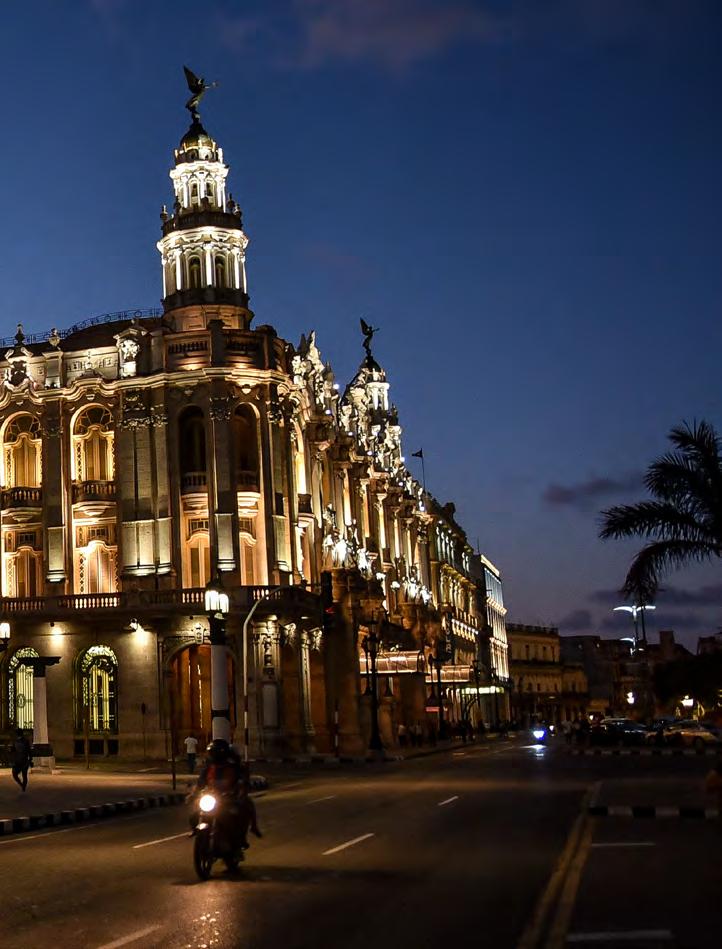
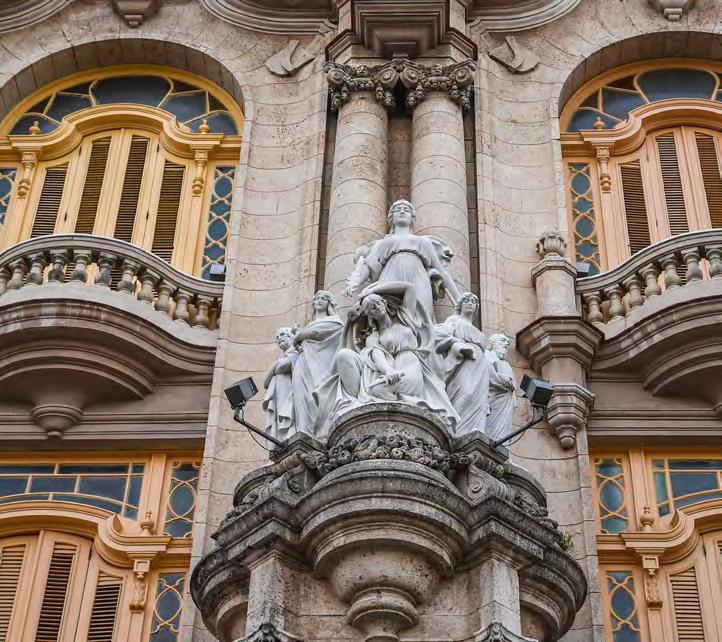
Nació con el nombre de Teatro Tacón, en homenaje al capitán general español Miguel de Tacón y Rosique, que gobernaba la isla en ese entonces. Su ubicación en La Habana fue un punto a su favor, lugares como el Paseo del Prado, el Parque Central, el Capitolio Nacional y el Hotel Inglaterra, contribuyeron a darle méritos y aun hoy, son sitios de interés que añaden valor a su entorno. También en el mundo, tuvo un sitio significativo, pues en esa época fue calificado como el teatro más grande y lujoso de América y el tercero del mundo, después de la Scala de Milán y la Opera de Viena. Fue diseñado con cualidades que aún conserva: magnífica acústica, un amplio escenario y una monumental lámpara, construida con vidrios e importada de París, conocida con el apelativo de «la araña», motivo de una popular copla que rezaba: «Tres cosas tiene La Habana que causan admiración: El Morro, La Cabaña y la araña del Tacón». La araña original fue destruida en 1863 en una reyerta del público debido a la mala calidad de una obra, pero el doctor Eusebio Leal Spengler, en su incondicional colaboración por rescatar el esplendor de su amada Habana, donó la lámpara que actualmente cuelga sobre la platea, muy similar a la original, esta vez elaborada con cristales de Bohemia. Los más encumbrados intérpretes del ballet, la zarzuela, el drama y la ópera en el mundo pasearon su talento por este escenario, conocido como «la catedral de la ópera en América», y allí estrenaron obras y debutaron, los más importantes intérpretes y agrupaciones cubanas. Este escenario fue testigo de la primera presentación de Alicia y su compañía en 1950, en la que la legendaria bailarina protagonizó La muerte del cisne y Las bodas de Aurora. El inmueble actual se terminó de construir en 1915 convirtiéndose en sede del Centro Gallego y en el 2015 fue sometido a una restauración capital, que respetó todos los elementos patrimoniales, para abrir sus puertas con total esplendor el primero de enero de 2016, como Gran Teatro de La Habana “Alicia Alonso”, en reconocimiento a los aportes a la cultura cubana y universal de la Maestra. Su fachada principal es un derroche de extraordinaria belleza arquitectónica, en ella sobresalen detalles neoclásicos, neobarrocos, y rococó; prevalecen relieves, cornisas, torres coronadas, y cuatro grupos escultóricos en mármol blanco, alegorías de Giuseppe Moretti de la Beneficencia, la Educación, la Música y el Teatro.
It was born with the name Tacón Theater, in homage to Spanish Captain General Miguel de Tacón y Rosique, who ruled the island at that time. Its location in Havana was a point in its favor, places like the Paseo del Prado, the Central Park, the National Capitol and the Inglaterra Hotel, contributed to give it merits and even today, they are sites of interest that add value to its surroundings. It also had a significant place in the world, since at that time it was qualified as the largest and most luxurious theater in America and the third in the world, after La Scala in Milan and the Vienna Opera House. It was designed with features that it still preserves: magnificent acoustics, a large stage and a monumental chandelier, built with glass imported from Paris, known as "the spider", the reason for a popular song that read: "Three things Havana has that cause admiration: El Morro, La Cabaña and the Tacón spider". The original chandelier was destroyed in 1863 in a public brawl due to the poor quality of a play, but Dr. Eusebio Leal Spengler, in his unconditional collaboration to rescue the splendor of his beloved Havana, donated the chandelier that currently hangs over the stalls, very similar to the original, this time made with Bohemian crystals. The world's most distinguished performers of ballet, zarzuela, drama and opera have shown their talent on this stage, known as "the cathedral of opera in America", where the most important Cuban performers and ensembles premiered their works and debuted. This stage witnessed the first presentation of Alicia and her company in 1950, in which the legendary dancer starred in The Death of the Swan and The Marriage of Aurora. The current building was completed in 1915 and became the headquarters of the Galician Center, and in 2015 it underwent a major restoration, which respected all the heritage elements, to open its doors in full splendor on January 1st, 2016, as the Gran Teatro de La Habana "Alicia Alonso", in recognition of the contributions to Cuban and universal culture of the Maestra. Its main facade is a display of extraordinary architectural beauty, where neoclassical, neo-baroque and rococo details stand out; reliefs, cornices, crowned towers, and four sculptural groups in white marble, allegories by Giuseppe Moretti of Charity, Education, Music and Theater, prevail.
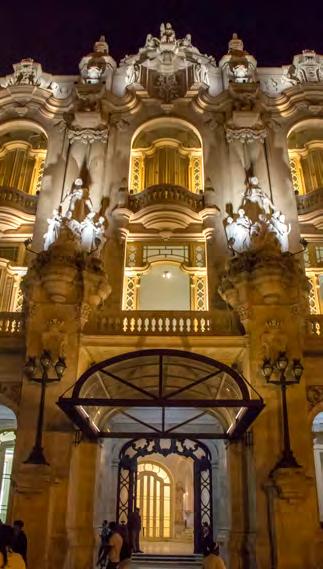
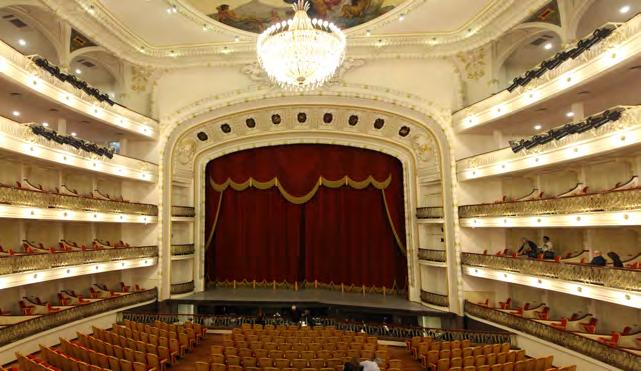
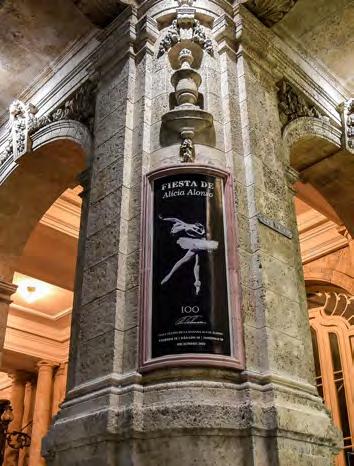

En el lobby recibe a los visitantes desde el 2 de enero de 2018, una bailarina de bronce, creada por el escultor José Villa Soberón -Premio Nacional de Artes Plásticas 2008-, quien se inspiró en el espíritu de Alicia en la escena. La sala García Lorca, que acoge uno de los más importantes eventos mundiales de la danza: el Festival Internacional de Ballet de La Habana, dispone de capacidad para mil espectadores. La institución cuenta, además, con las salas Ernesto Lecuona y Alejo Carpentier, El Tablao Flamenco, el Café Intermezzo y La Cava. Además de las programaciones artísticas de alta calidad que ofrece el teatro los fines de semana, como parte del paseo por el centro histórico de la ciudad, es posible recorrerlo, pues de martes a domingos, se realizan visitas guiadas que permiten apreciar su belleza, distinción y extraordinaria arquitectura, así como adentrarse en su rica historia cultural. En el Gran Teatro de La Habana Alicia Alonso se realizaron las honras fúnebres de la prima ballerina assoluta, el 19 de octubre de 2019, momento en que el pueblo cubano mostró amor incondicional a su eterna Alicia. Muchos aseguran que recorrer La Habana y no pasar por este teatro, es como visitar París y no subir a la Torre Eiffel. Y es que el Gran Teatro de La Habana es una referencia histórica, arquitectónica y cultural, en la vida de esta ciudad motivadora y mágica. Si visita La Habana, aproveche la oportunidad, usted será bienvenido.
In the lobby welcomes visitors since January 2nd, 2018, a bronze ballerina, created by sculptor José Villa Soberón -National Plastic Arts Award 2008-, who was inspired by the spirit of Alicia on stage. The Garcia Lorca Hall, which hosts one of the most important dance events in the world: the Havana International Ballet Festival, has a capacity for 1,000 spectators. The institution also has the Ernesto Lecuona and Alejo Carpentier halls, El Tablao Flamenco, the Café Intermezzo and La Cava. In addition to the high-quality artistic programs offered by the theater on weekends, as part of the tour around the historic center of the city, it is possible to visit it, since from Tuesdays to Sundays, guided tours are offered that allow visitors to appreciate its beauty, distinction and extraordinary architecture, as well as to delve into its rich cultural history. The funeral honors of the prima ballerina assoluta were held at the Gran Teatro de La Habana Alicia Alonso on October 19th, 2019, a moment in which the Cuban people showed unconditional love to their eternal Alicia. Many say that visiting Havana and not passing by this theater is like visiting Paris and not going up the Eiffel Tower. The Gran Teatro de La Habana is a historical, architectural and cultural reference in the life of this motivating and magical city. If you visit Havana, take the opportunity, you will be welcome.
